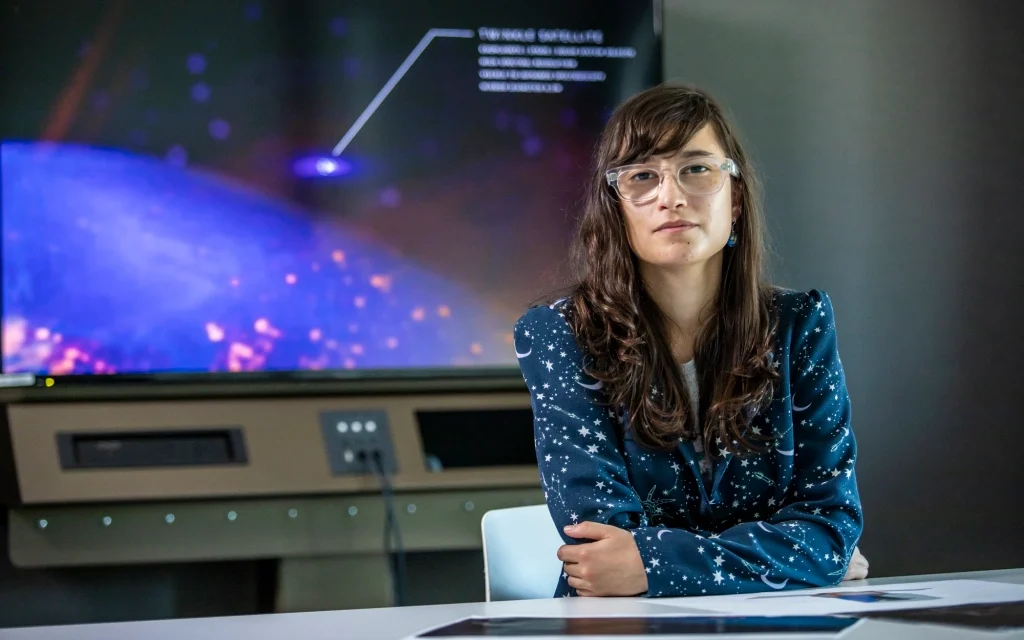Image credit: D. Martinelli/University of Southern Queensland
Nataliea Lowson, a PhD candidate from the University of Southern Queensland has been a member of the Twinkle Extrasolar survey programme since 2020. We invited her to share her experience of working on the survey programme with an international team in this post.
Can you please tell us about yourself?
I’m Nataliea Lowson and I’m a PhD Candidate from the University of Southern Queensland (UniSQ). My research primarily focuses on characterising exoplanets, but I have a particular interest in understanding their atmospheres. While receiving my BSc with honours at the Australian National University, I also worked in parallel at the Australian Astronomical Observatory (now Australian Astronomical Optics) in Sydney as an outreach creative for the Data Central team. Additionally, I have been involved in a number of outreach projects since my undergraduate, for I am a big advocate for increasing the accessibility of astronomy to the public.
What areas of research are you most interested in?
Throughout my candidature, I have been involved in a number of projects surrounding exoplanet characterisation using both ground-based and space-based facilities. Such work has included analysing atmospheric annuli using spectroscopy, identifying planetary systems through transit photometry, and searching for transit-timing variations (TTVs). Through a combination of these techniques, we can uncover the physical and chemical properties of distant worlds beyond our Solar System.
Can you explain your Twinkle science theme briefly?
Prior to launching the Twinkle satellite, it is important that we have the most up-to-date orbital parameters for all exoplanets that we are interested in observing. My role is to assist in this task using ground-based photometry to refine the orbital ephemerides of these targets whilst simultaneously monitoring for TTVs. Additionally, I am also involved in the design of a sub-Saturn atmosphere characterisation survey, which will aim to understand the formation history pathway of this rare sub-class in greater detail.
How would you describe your experience of working on the Twinkle survey programme?
Working alongside the BSSL on the Twinkle mission has been incredibly rewarding and has resulted in providing various opportunities. I have had the invaluable experience of working alongside astronomers I otherwise would not have throughout my candidature, whilst also being directly involved in planning a space mission as an early career researcher. Being the first of its kind, I’m excited to see how Twinkle will contribute towards the future of academic mission planning in space.
The University of Southern Queensland is a founding member of the Twinkle Extrasolar survey programme. Twinkle, expected to launch in 2025, will deliver visible and infrared spectroscopy of thousands of targets, enabling scientists to produce transformative research on exoplanet atmospheres, solar system objects, stars and stellar discs.
